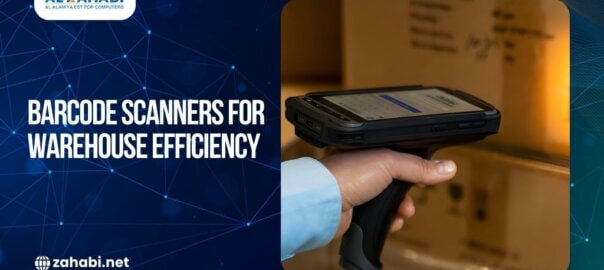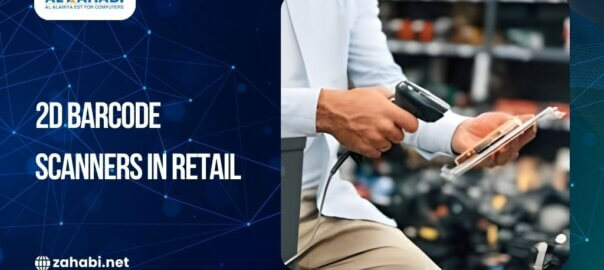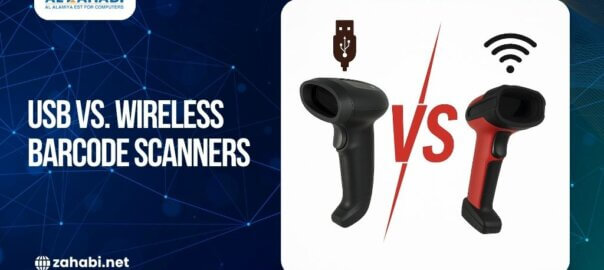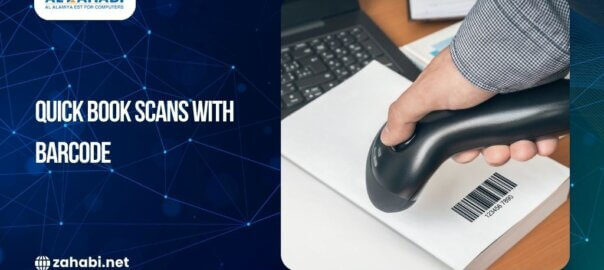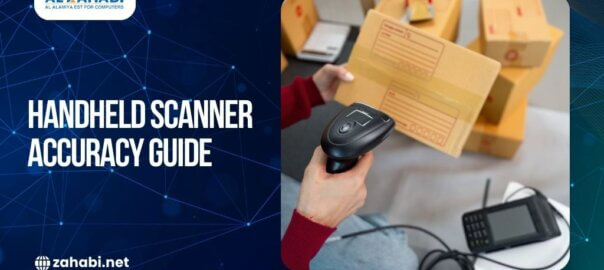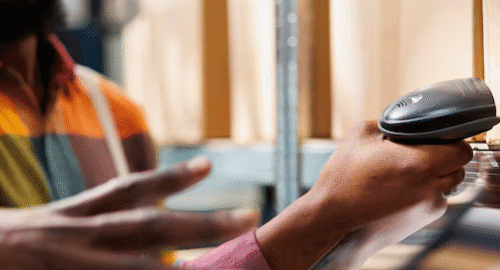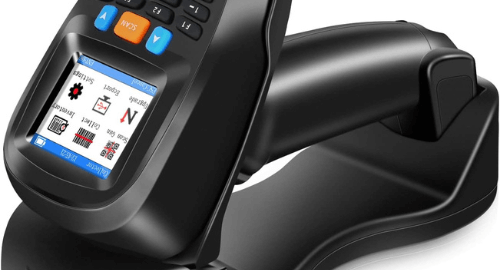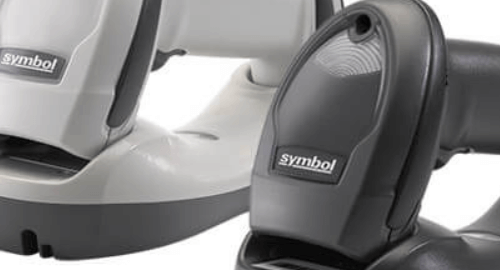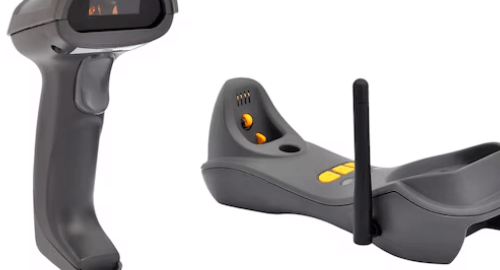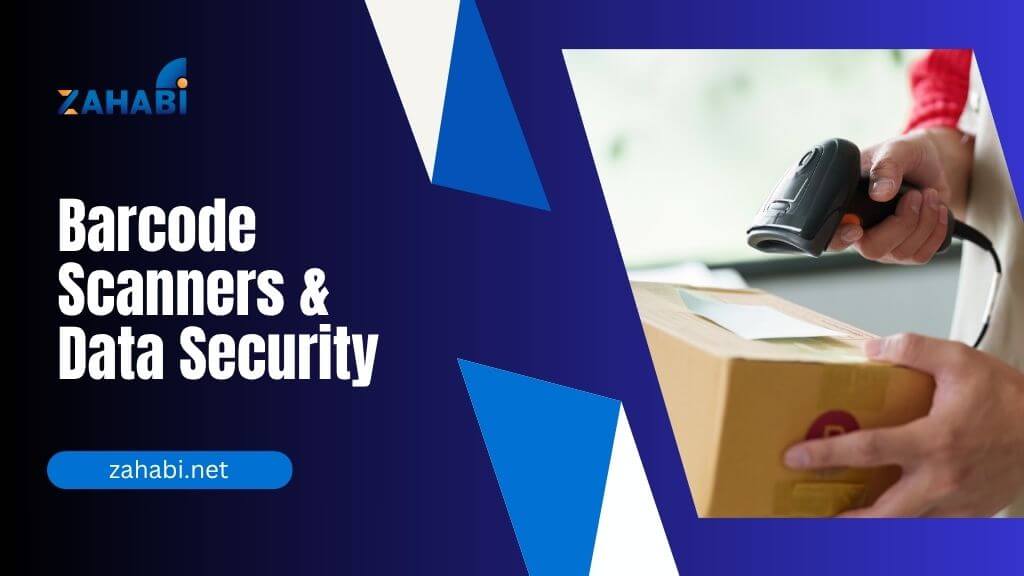
From Scan to Safety: Ensuring Data Security with Barcode Scanners
Kuwait is now making a big move. Our retail business is growing at a faster pace. Starting from supermarket shelves, salon hubs, and large logistics hubs, digital expansion is making things simpler and quicker. But, ever wondered how it can impact our sensitive information? Every scan, transaction, and even a small digital record holds our personal and confidential data that must be protected and handled with care.
However, many businesses still depend on traditional systems and outdated software that do not provide the level of data protection our modern world demands. These systems are prone to cyber attacks, data breaches, and also pricing errors. This can lead to disruption in the day-to-day operational activities and risk the trust of your customers. Thus, we need a modern POS system in Kuwait that can keep the customer’s data safe and secure.
To fulfill this need, we at Zahabi came up with a valuable POS system that combines accuracy, speed, and safety effectively. So, bringing a strong and dependable POS system and advanced barcode scanners to your retail outlet can make all the digital transactions smoother with a thick layer of data security.
Need for Barcode Scanners in the Kuwait Retail Market
Nowadays, barcode scanners have become the ultimate game-changer. They are no longer used as a mere checkout option, but as a data protection shield. It works smartly with a POS machine and quietly protects you from cyber threats and fraud.
As the e-commerce and retail market is becoming predominant in Kuwait, data vulnerabilities have increased. Even a simple unprotected connection linked to your barcode scanner and POS system can expose sensitive information of your customers, which includes their personal identities and payment details.
As an outcome, our Honeywell 1472g2d 2USB 5 R Barcode Scanner is made to offer unmatched accuracy with modern-age scanning capabilities. Such scanners ensure that every payment is processed faster and stored with precision.
How New-Age Barcode Scanners Add Value?
New barcode scanners are more reliable than traditional checkout devices. They seamlessly connect with the POS system in Kuwait and aim to provide a smooth and efficient checkout experience to your customers.
By installing the latest barcode scanners and integrating them with your POS machine, you can simply enjoy their benefits:
- Track inventory with high accuracy in real-time.
- Detects errors instantly for invalid or duplicate product codes.
- Encrypt data at every scan and thereby prevent unauthorized access.
- Smooth and faster billing without any manual errors in data entry.
These benefits will not only help you build and maintain the trust of your customers but also help your team work with great efficiency.
Explore Zahibi’s Honeywell Barcode Scanner – Trusted by 1000+ Retail Outlets
When we look at choosing the right barcode scanner that perfectly blends safety and speed, our Honeywell 1472g2d 2USB 5 R Barcode Scanner stands as the best and most trusted choice for the Kuwait retail market.
Why do business owners prefer it over other options?
- Matchless Scanning Accuracy
- Offers super accurate 2D scanning technology for digital and printed barcodes.
- Smoothly reads faded, damaged, and even hard-to-read barcodes without making errors.
- Reduce manual inputs and the need for rescans. This helps to improve checkout speed with precision.
- Quite Durable Retail-based Design
- Made with strong, impact-resistant materials to perform daily retail operations.
- Stands firmly and allows for heavy usage in various salons, supermarkets, and many logistics centers.
- Deliver high, consistent performance in high-traffic and busy areas.
- Offer Extended Scan Distance
- Our barcode scanner can scan items from a longer range. It also includes products at the bottom of the shopping carts.
- Improve comfort and speed at the time of scanning high-volume products.
- Reduce the stress of the employees instantly by making the checkout flow smooth.
- Wireless Convenience
- Offer wireless operation that provides complete freedom of movement at all the checkout counters.
- Best for mobile scanning tasks and flexible store layouts.
- Reduce the unnecessary clutter and remove tangled cables for a better and cleaner workspace.
- Integrates Smoothly with the POS Machine
- Operates effortlessly with any new-age POS system in Kuwait.
- Ensure that each scan is properly verified and encrypted.
- Offers secure data transfer, instant billing, and accurate tracking of sales activities.
- Provide Various Options for Connectivity
- Wireless (Wi-fi) – Perfect for data syncing and inventory tracking in real time.
- USB – Best for desktop setups and fixed POS terminals.
- Bluetooth – Allows for mobile scanning via smartphones, tablets, and thus offers greater flexibility.
How Does a POS System and Barcode Scanner Work Smoothly?
A barcode scanner is most efficient only if it is connected to a POS system. When integrated, both work hand in hand and help to keep your business data secure, clean, and accurate.
A brand new POS machine aids in updating inventory, automating pricing, and payment processing. On the other hand, a barcode scanner ensures that the data input is accurate from the beginning. This dynamic duo reduces human error and levels up data security standards.
Combining barcode scanners with a strong POS system in Kuwait helps in better compliance while keeping data safe and secure. This helps to reduce various operational disruptions and strengthens the trust and confidence of customers.
Frequently Asked Questions
- Are barcode scanners secure to use?
Yes. Modern scanners provide the top-level data security that your customer needs. They use encrypted data transmission systems and ensure no sensitive data is exposed at the time of making transactions.
- How do barcode scanners protect sensitive data?
Barcode scanners reduce the chances of manual data entry errors and encrypt every scan to prevent unauthorized data access.
- Are wireless barcode scanners safe?
Yes, definitely. Barcode scanners like Honeywell 1472g2d 2USB 5 R Barcode Scanner use a secure Bluetooth connection to protect data links.
- Why is barcode security important?
It is important because it helps to prevent pricing errors, data breaches, and cyber fraud, and ensures all activities are running smoothly.
Final Words
In this interconnected era, where POS transactions are improving customer experience, data has become an invaluable resource. Due to this, combining modern barcode scanners with new-age POS systems in Kuwait can be super helpful to protect data and smoothen the process of daily customer transactions.
Zahibi has the most trusted POS machine that can help you lead from scan to safety. To know more, visit our website now.


